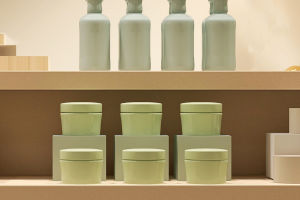The Netherlands, renowned for its vibrant tulip fields, also boasts a lesser-known yet equally enchanting spectacle: the early crocus bloom.
As winter fades and the chill in the air begins to lift, these delicate flowers emerge, signalling the arrival of spring and infusing the Dutch landscape with a burst of colour and hope.
Crocuses, belonging to the iris family, are small perennial plants characterized by their cup-shaped flowers and slender, grass-like leaves. While they are native to a wide range of habitats across Europe, Asia, and North Africa, the Netherlands has become particularly renowned for its early crocus displays.
The sight of fields carpeted in purple, white, and golden-yellow hues is a sight to behold, drawing visitors from far and wide to witness nature's awakening after the long winter slumber. The early crocus bloom typically begins in late February or early March, depending on weather conditions, and lasts several weeks.
One of the most famous locations in the Netherlands where early crocus bloom was experienced was Keukenhof Gardens, often called the "Garden of Europe." This sprawling botanical garden in Lisse showcases over 7 million flowers, including an impressive array of crocuses.
Visitors meander along winding pathways, marvelling at the kaleidoscope of colours and fragrances that envelop them.
Beyond their aesthetic appeal, early crocuses hold symbolic significance in Dutch culture. As harbingers of spring, they represent renewal, growth, and the promise of warmer days ahead. After enduring the dark and dreary winter months, the emergence of crocuses serves as a reminder that brighter times are on the horizon.
In addition to their symbolic value, early crocuses play a vital ecological role in the Netherlands. As one of the first flowers to bloom in spring, they provide a crucial nectar source for pollinators such as bees and butterflies. This early food source is essential for supporting insect populations as they emerge from hibernation and begin their foraging activities.
Culturing early crocuses in the Netherlands is also intertwined with the country's rich horticultural heritage. Dutch growers have perfected techniques for forcing bulbs to bloom earlier than their natural schedule, allowing them to capitalize on the demand for early spring flowers.
Through methods such as temperature control and hydroponic cultivation, growers can produce vibrant crocus displays even before the arrival of warmer weather.
However, the early crocus bloom is not without its challenges. Unpredictable weather patterns, including late frosts and heavy rains, can disrupt the delicate balance of nature and damage fragile flowers. Climate change poses an additional threat, altering traditional growing seasons and impacting the timing of blooms.
Despite these challenges, the early crocus bloom in the Netherlands remains a cherished tradition, celebrated by locals and visitors alike. Whether strolling through manicured gardens or admiring the flowers from afar, experiencing the vibrant colors and delicate beauty of crocuses is a true testament to the resilience and majesty of nature.
The early crocus bloom in the Netherlands is a spectacular natural phenomenon that captivates the senses and fills the heart with joy. As the first heralds of spring, crocuses symbolize hope, renewal, and the enduring cycle of life.
Through their vibrant displays, they remind us to embrace the beauty of each season and cherish the moments of fleeting splendor that nature graciously bestows upon us.


